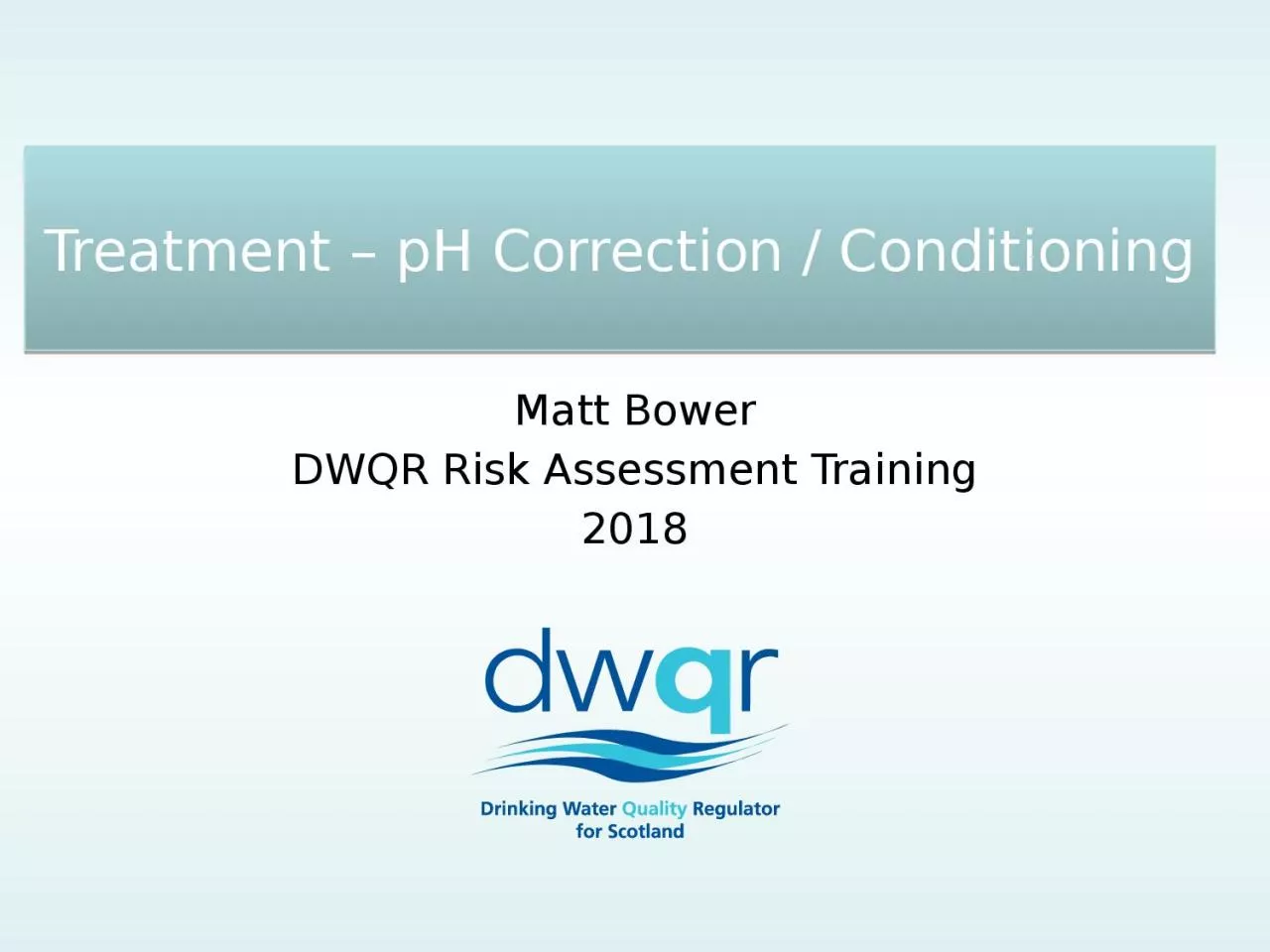

Matt Bower DWQR Risk Assessment Training 2018 Overview Overview Overview Metal Possible Sources Effects Lead Lead piping and tanks solder some brass fittings stabiliser in some PVC pipes ID: 1014830
Download Presentation The PPT/PDF document "Treatment – pH Correction / Condition..." is the property of its rightful owner. Permission is granted to download and print the materials on this web site for personal, non-commercial use only, and to display it on your personal computer provided you do not modify the materials and that you retain all copyright notices contained in the materials. By downloading content from our website, you accept the terms of this agreement.
1. Treatment – pH Correction / ConditioningMatt BowerDWQR Risk Assessment Training2018
2. Overview
3. Overview
4. Overview MetalPossible SourcesEffects LeadLead piping and tanks; solder; some brass fittings; stabiliser in some PVC pipesDevelopmental issues in children; raised blood pressure in older people. NickelPlumbing fittings made from metal alloys, stainless steel and plated products Chronic exposure may cause heart and liver damage. Dermatitis in those sensitised. CopperPiping, brass fittings and fixtures. Taste, discolouration of fittings and hair, possibly gastro-intestinal effects. Toxic to people with Wilson’s disease. ZincGalvanised piping and tanks, brass fittings Taste and potential gastro-intestinal effects at high concentrations. IronIron or steel piping or tanks Primarily aesthetic – sediment and brown discolouration. Substrate for accumulating contaminants from upstream sources.
5. Usage on small water supplies
6. Key Points to Watch For
7. Questions TPH1Is there a risk of water supplied being of incorrect pH?Many natural waters in the North and West of the UK are naturally of low pH. Consequently, many private water supplies require pH correction to ensure that the water is not corrosive to metal plumbing fittings. Care needs to be taken to ensure that any pH correction process is tightly controlled, as over- or under-correction can occur. 5TPH2Is there a risk or evidence of corrosion of fittings?This may be evident through staining of sanitary ware (often green if copper is present) and by an increased rate of leakage. 5TPH3Is there a risk of any installed pH correction failing or being inadequate?Any pH correction treatment should be designed to deal with the quality of the incoming water at all operating flow rates. Although pH itself is usually fairly consistent, rapidly changing flows can be an issue and pH correcting filters can block if incoming water is not of the correct quality.4TPH4Is the plant inadequately maintained according to the design specification? A pH correction plant will only perform effectively if it is correctly designed and operated in accordance with the initial specification. These should be documented to ensure requirements are clear. On-going maintenance will be required to ensure performance continues to be optimal. 4TPH5Is there a risk of inadequate pH correction due to the lack of a programme in place to monitor and replace media on exhaustion?Many pH correction processes rely on contact with an alkaline media that is gradually used up. It will need periodic topping up with fresh media, however, this may significantly raise the performance of the filter to the point that over-correction is possible. Where only a proportion of the flow is treated, the blend may need to be adjusted to compensate. Regular monitoring of pH is essential. 4TPH6Is precipitate build up an issue (is it monitored / controlled)?Raising the pH of the water may cause certain dissolved minerals (especially iron and manganese) to precipitate out, which can lead to the gradual clogging of the filter. If this is an issue, measures may be needed to periodically remove deposits from the filter.4